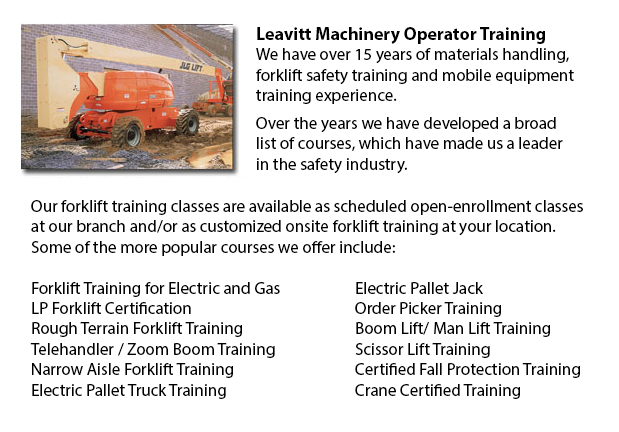
Boom Lift Certification Kelowna - Making use of elevated work platforms allow for maintenance operations and work to be done at elevated work heights which were otherwise not reachable. Boom Lift Certification Training educates workers about safely operating scissor lifts and boom lifts.
When work platforms are operated unsafely, they have the possibility for serious injury and even death, regardless of their lift style, site conditions or application. Electrocution, falls, crushed body parts, and tip-overs could be the unfortunate result of improper operating procedures.
To be able to avoid aerial lift accidents, boom lift operators must be trained by qualified workers in safely operating the certain type of aerial lift they will be utilizing. Aerial lifts should never be modified without the express permission of other recognized entity or the manufacturer. If you are leasing a lift, ensure that it is correctly maintained. Before utilizing, controls and safety devices should be inspected to make sure they are correctly working.
It is vital to follow safe operating procedures to be able to avoid workplace accidents. Driving an aerial lift while the lift is extended should not be carried out, nonetheless, a few models are designed to be driven when the lift is extended. Set outriggers, if available. Always set brakes. Avoid slopes, but when necessary utilize wheel chocks on slopes which do not go beyond the slope limitations of the manufacturer. Adhere to manufacturer's weight and load limitations. When standing on the platform of boom lifts, use full-body harnesses or a safety belt with a two-foot lanyard tied to the basket or boom. Fall protection is not required for scissor lifts that have guardrails. Do not climb or sit on guardrails.
This course consists of the following topics: training and certification; safety guidelines to be able to prevent a tip-over; inspecting the travel path and work area; slopes and surface conditions; stability factors; other tips for maintaining stability; leverage; weight capacity; testing control functions; pre-operational inspection; mounting a vehicle; safe operating practices; safe driving procedures; overhead obstacles and power lines; use of lanyards and harness; PPE and fall protection; and avoid falling from platforms.
When successful, the trained employee would learn the following: authorization and training procedures; pre-operational check procedures; factors affecting the stability of boom and scissor lifts; how to avoid tip-overs; how to use PPE, how to use the testing control functions and strategies to avoid falls.
-
Counterbalance Forklift License Kelowna
Counterbalance Forklift License Kelowna - Forklifts, when operated by completely trained workers, are a major advantage to companies. We offer a thorough training program consisting of all parts of operating a powered lift device. Counterbalance fork... More -
Forklift Certification Schools Kelowna
Forklift Certification Schools Kelowna - Within North America, forklift certification is mandatory, making forklift training programs important for both the company and their employees working as forklift operators. Forklift training focuses on healt... More -
Manlift Operator Certification Kelowna
Manlift Operator Certification Kelowna - We provide a scissor platform and aerial lift training and certification to empower the trainee with the general understanding and knowledge of the safe and efficient utilization of "Power Operated Mobile Work... More -
Crane Training Schools Kelowna
Crane Training Schools Kelowna - We have designed several programs for Mobile Crane Operation at our Crane Training Schools. These programs are recommended for the experienced operator who requires re-certification or certification, and for inexperie... More -
Heavy Equipment Operator Classes Kelowna
Heavy Equipment Operator Classes Kelowna - A heavy equipment operator is a person who has received the proper training to operate a particular type or piece of machine. There are a lot of ways for the operator to undergo training and certification in... More -
Telehandler, Rotational Telehandler, Zoom Boom Training in Kelowna
Telehandlers or also known as Telescopic handlers are really popular piece of heavy construction equipment normally utilized in agriculture and construction trades. These equipments have extreme reaching capability and could get to places where a tra... More -
Zoom Boom Training Kelowna
Zoom Boom Training Kelowna - Zoom Boom Training is intended to train operators on variable reach forklifts. The goals of the training are to impart an understanding of the physics of the equipment, and to outline the operator's tasks. This course fol... More -
Boom Lift Safety Training Kelowna
Boom Lift Safey Training Kelowna - Boom lifts fall under the type of elevated work platform or aerial lifting device. Most normally utilized in construction, industry, and warehousing; the boom lift is so versatile that it can be utilized in almost w... More

Forklift Training Kelowna
TOLL FREE: 1-888-254-6157
Kelowna, British Columbia
forklifttraininginkelowna.com
Email Us
About Us


